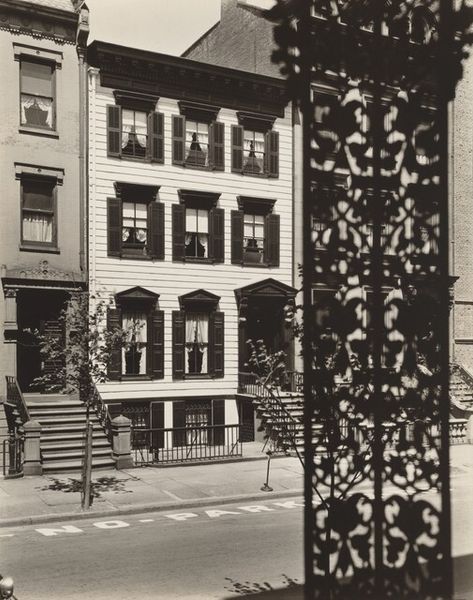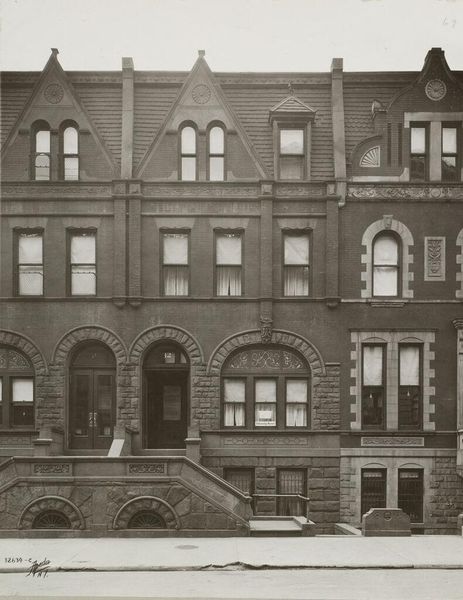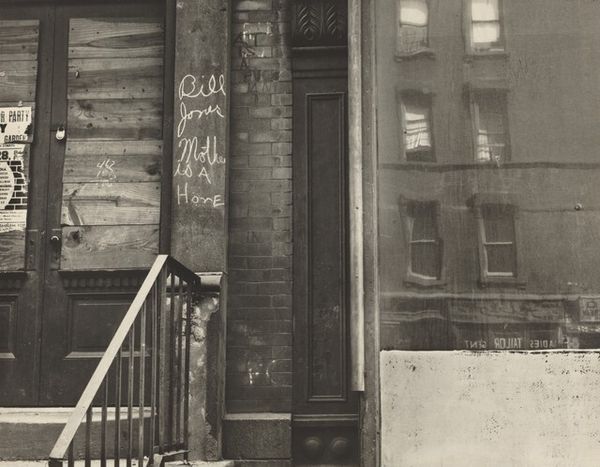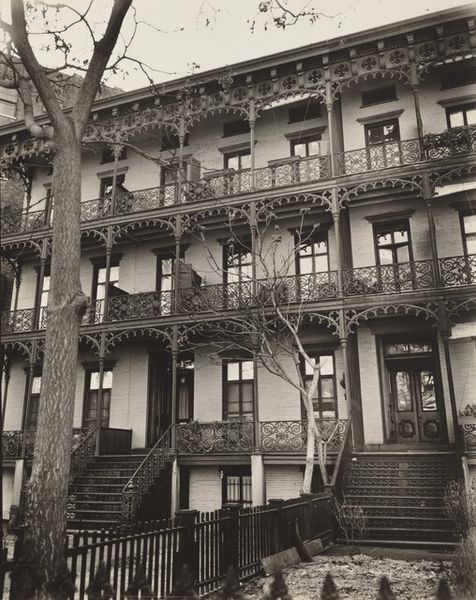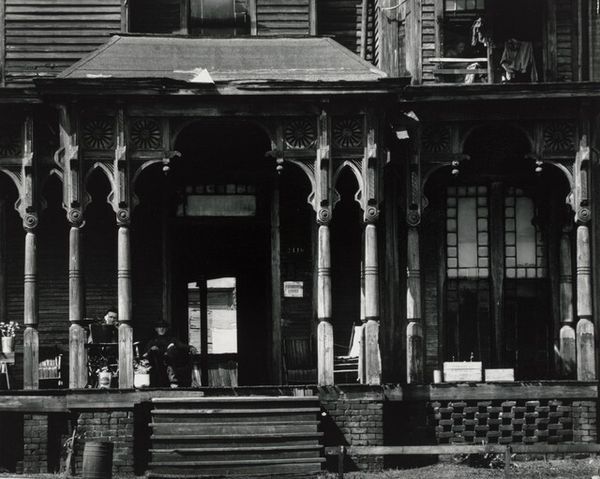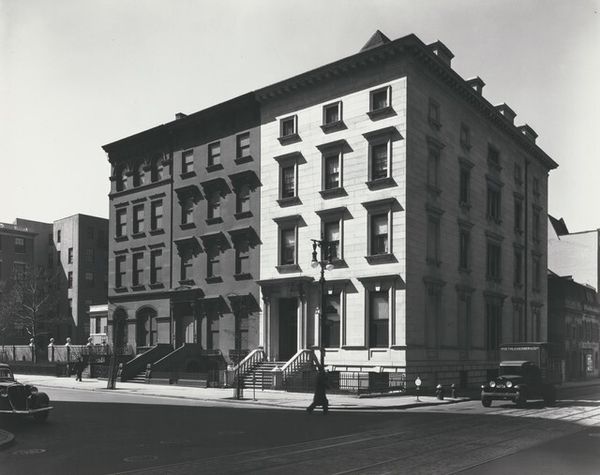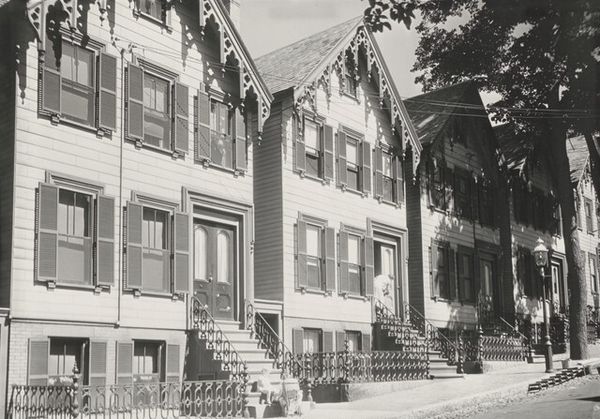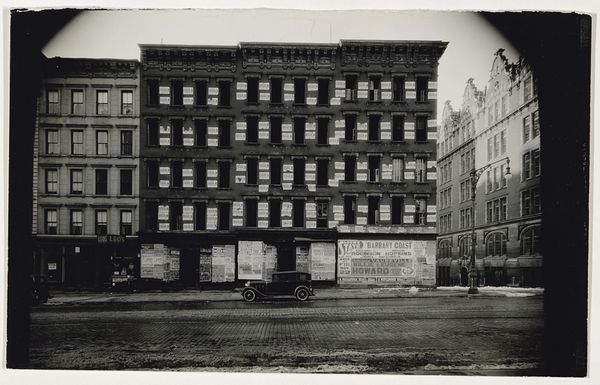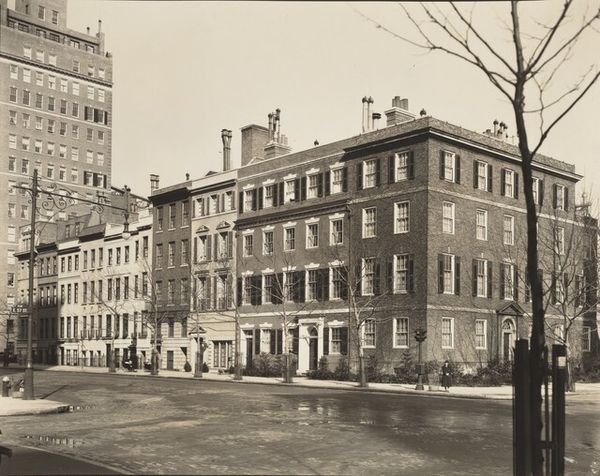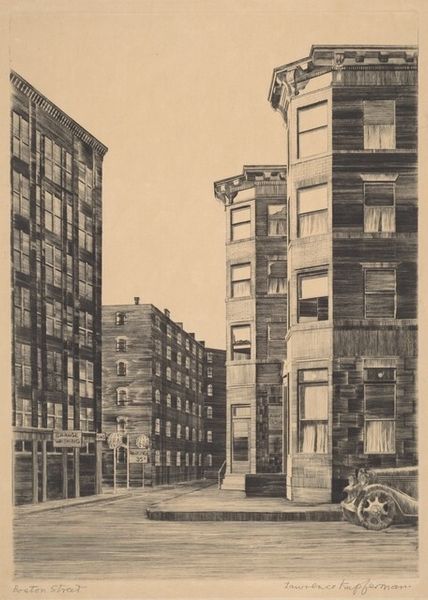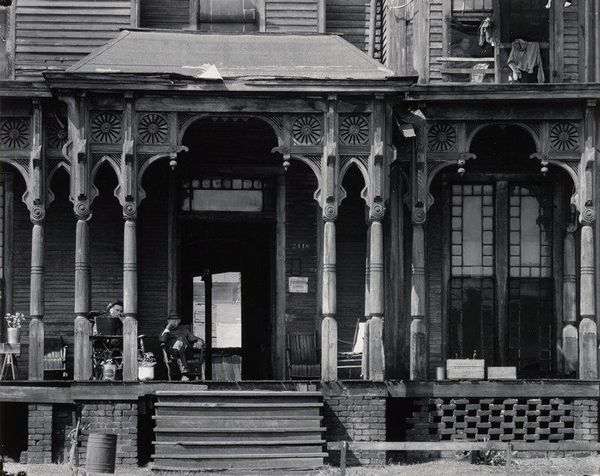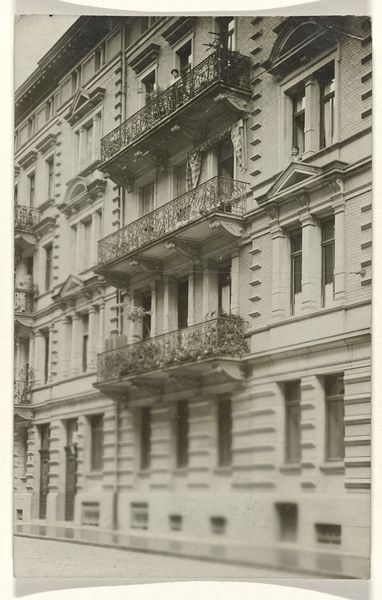
photography, gelatin-silver-print
#
black and white photography
#
black and white format
#
historic architecture
#
photography
#
historical photography
#
gelatin-silver-print
#
monochrome photography
#
ashcan-school
#
cityscape
#
realism
#
monochrome
Dimensions: sheet: 25.2 x 20.3 cm (9 15/16 x 8 in.)
Copyright: National Gallery of Art: CC0 1.0
Curator: This gelatin silver print, "East Broadway #294, Manhattan," was captured by Berenice Abbott in 1937. It presents a row of buildings, their facades asserting a quiet yet dignified presence. What strikes you first about this image? Editor: There's a stillness, almost a hush, to the scene. The repetitive rhythm of the architecture, those stoops marching along the sidewalk... it feels very composed, almost theatrical. It reminds me a little bit of set design. Curator: Indeed, Abbott’s eye frames these buildings not just as static structures but as players on a stage. You know, this was during the Depression era; her photographs weren't simply about documenting buildings. They were about capturing the spirit, the socio-economic realities, of a changing New York. She was keen on chronicling what was vanishing due to new constructions. Editor: That makes me wonder about the residents who once climbed those steps every day. These buildings weren't just background. Each detail—the ironwork, the brick, the window dressings—whispers of individual lives lived within a larger collective experience. How were those details charged by race and gender? Did different populations make use of the city spaces differently? Curator: I love how you’re prompting us to remember the people that bring context to Abbott's cityscapes. Her photographs definitely tap into something about the resilience of community amid urban evolution and struggle. There is a silent rebellion captured in those photographs, the same we find in Ashcan School painters: the refusal to beautify and the insistence on realism. Editor: Absolutely. It's this tension, I think, that makes the image so compelling. The symmetry almost lulls you into a false sense of order, but there are these undercurrents of history and unspoken narratives that make the image vibrant. It makes me appreciate Abbott’s critical engagement with the transformation of the city. Curator: Me too! Her work is so much more than bricks and mortar. Editor: It truly makes one consider what will be seen by people hundreds of years into the future looking back at photos like these. What would they surmise about the reality that it shows? What do *we* miss from lack of context? Curator: Wonderful points. It brings this image from the past into our present.
Comments
No comments
Be the first to comment and join the conversation on the ultimate creative platform.
